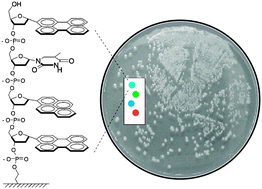Millions of people die each year from bacterial infections. Scientists have been searching for a low-cost way to quickly identify bacteria so disease can be diagnosed and treated at an early stage.

The chemosensors could be developed into quick, cheap and reliable reporters for early identification of bacteria in both patient samples and contaminated food, say the authors.
Want to find out more? Download Kool’s ChemComm communication to read more about how the chemosensors work. You might also be interested in the group’s recent Chemical Science Edge article, where they use fluorescent DNA to sense toxic gases.










